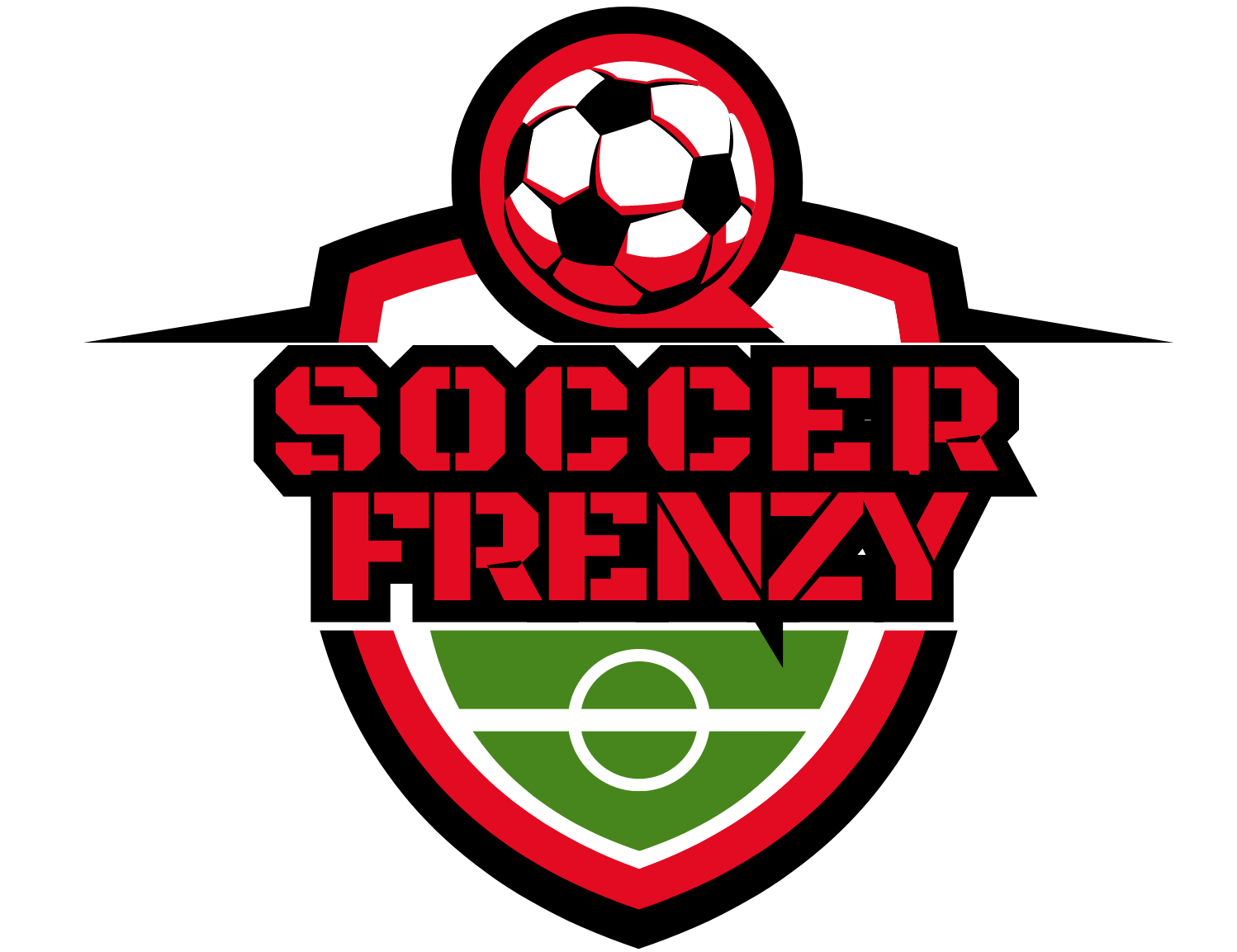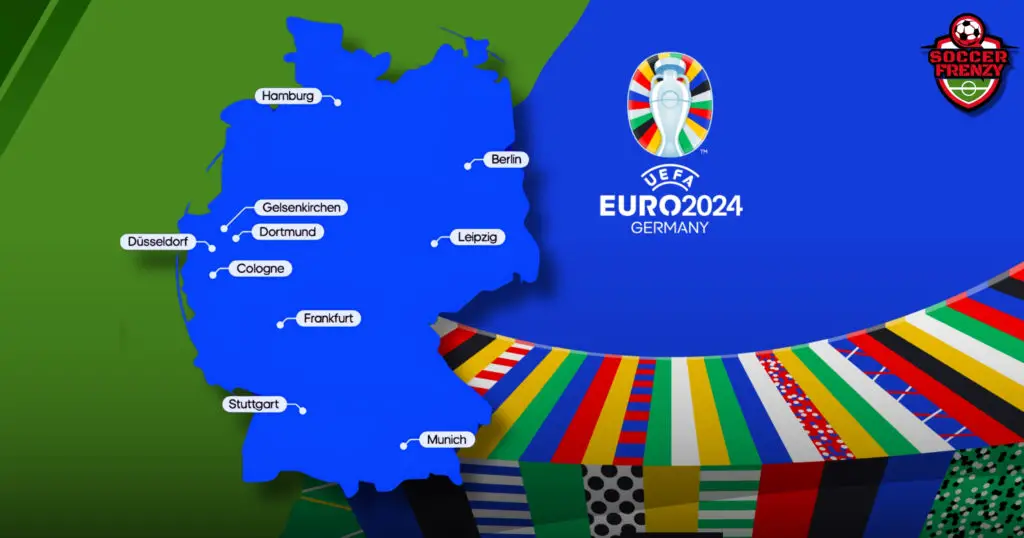EURO 2024 – The Event Of The Year On The European Continent!
Starting June 14 in Germany, 24 teams will compete for the title of “Champion of Europe.”
Germany will host the 17th edition of the UEFA European Championship, a three-time titleholder in this tournament.
The tournament opens on June 14, with the final clash scheduled a month later on July 14. Germany competed with Turkey for the hosting rights of the football event and was ultimately chosen to host for the first time since 1988 when the tournament was held in then-West Germany due to the country’s division.
Championship History
This will be the 17th edition of the Old Continent championship, with this year’s motto being “United in the Heart of Europe.” Given football’s dynamic development and the modernization of sports in general, it’s worth looking back at the past—back to 1960, when the first continental championship was held.
France hosted the inaugural tournament, and the finals consisted of only four teams, which starkly contrasts the number of participants. A total of 17 teams took part in the first edition, which had a different format involving direct elimination through home-and-away legs, with semifinals held at a single location.
The debut edition of the European Championship **was also controversial.
France, Yugoslavia, and Czechoslovakia reached the semifinals in the usual manner by defeating Austria, Portugal, and Romania, respectively. However, the USSR advanced to the final four by default. Their quarterfinal opponent, Spain, led by General Francisco Franco, refused to travel to the USSR for political reasons. After the Soviets rejected the proposal to decide the match on neutral ground, Spain was disqualified, and the Soviet team progressed.
Three of the four semi-finalists came from communist countries.
The stadiums that hosted the final four matches are still in use today—one semifinal and the final were held at Parc des Princes in Paris. In contrast, the other semifinal and the third-place match occurred at Velodrome in Marseille between July 6 and 10, 1960.
France played in the capital and initially led against the Balkan team, first 3-1, then 4-2. However, in the last 15 minutes, Yugoslavia scored three goals to win 5-4. Milan Galić scored the first goal in the European Championship finals. To this day, this remains the highest-scoring match in the history of the European Championships.
The second semifinal was less thrilling.
The USSR team, which advanced without playing, defeated Czechoslovakia 3-0, with one of the goals scored by future tournament top scorer Viktor Ponedelnik, who shared the title with François Heutte (France), his teammate Valentin Ivanov, as well as Galić and Dražan Jerković from Yugoslavia, each with two goals.
Ultimately, Ponedelnik, then playing for SKA Rostov-on-Don, secured the European title for his country. The final in Paris was played on a Sunday and had 10,000 fewer spectators than the semifinal at the same stadium, which could have been more surprising given the absence of the local team. Galić gave Yugoslavia the lead in the 43rd minute, Slava Metreveli equalized in the 49th, and Ponedelnik scored in overtime – 2-1 in the 113th minute, securing his team’s place in history.
The hero for the champions recalled, “The final started at 10:00 PM Moscow time on Sunday evening and ended shortly after midnight. My last name was a dream for every sports journalist.”
The USSR players received $200 each and were taken to the Eiffel Tower, where they met the then-president of Real Madrid, Santiago Bernabéu. “He was ready to buy half our team without hesitation, but we avoided conversations in that direction,” added the top scorer.
Czechoslovakia took third place after a 2-0 win against France. One of the goal scorers was Vlastimil Bubník, who won an Olympic bronze medal in ice hockey four years later.
With an average of 4.25 goals per match (17 in a total of 4 games), this remains the highest-scoring championship in history.
Since then, ten nations have won the coveted trophy, with Italy being the current title holder.
All European champions so far:
2021 Italy; 2016 Portugal; 2012 Spain; 2008 Spain; 2004 Greece; 2000 France; 1996 Germany; 1992 Denmark; 1988 Netherlands; 1984 France; 1980 West Germany; 1976 Czechoslovakia; 1972 West Germany; 1968 Italy; 1964 Spain; 1960 Soviet Union
Stadiums
The matches will be played in a total of 10 modern stadiums owned by clubs from the Bundesliga and the Second Bundesliga, which impress with their features:
“Allianz Arena”, Munich
Club: Bayern Munich
Capacity: 75,000 people
Scheduled matches for Euro 2024: Six, including the opening match and a semifinal.
“Allianz Arena” immediately catches the eye with its 2,760 illuminated and colored panels. Initially, the panels could only light up in blue, white, or red, but in the summer of 2014, they were upgraded with LED technology. They can now light up in all colors to mark any major occasion, such as the tournament’s opening match and one of the championship’s semifinals.
“Signal Iduna Park”, Dortmund
Club: Borussia Dortmund
Capacity: 81,365 people
Scheduled matches for Euro 2024: Six, including a semifinal.
When you think of Signal Iduna Park, you immediately think of the legendary “Yellow Wall.” It is 100 meters wide and 40 meters high. With a slope of 37 degrees—steep as a ski jump—the south stand is impressive and the largest standing terrace in Europe, with a capacity of 24,454 seats. With over 80,000 spectators, Dortmund has the highest average attendance of all football clubs worldwide.
“Olympiastadion”, Berlin
Club: Hertha Berlin
Capacity: 74,475 people
Scheduled matches for Euro 2024: Six, including the final
Hertha’s home is one of the most iconic venues in Europe and has a rich history dating back to 1936 when it hosted the Olympic Games. Usain Bolt’s world records in the 100m and 200m at the 2009 World Championships are perhaps the most memorable events around the stadium’s blue track—the colour chosen at Hertha’s request as part of a careful reconstruction between 2000 and 2004.
The route between the pitch and the dressing room even includes an escalator to help tired legs rest at halftime. Zinedine Zidane’s career ended here with his headbutt on Materazzi during the 2006 World Cup final. The most important match of the championship, the final, will be played here.
“RheinEnergieStadion”, Cologne
Club: Cologne
Capacity: 50,000 people
Scheduled matches for Euro 2024: Five
Formerly Sportpark Müngersdorf, the stadium was opened in 1923 at the initiative of former German Chancellor Konrad Adenauer. At one point, it was the largest sports facility in Germany until the Olympiastadion was constructed in 1936. A distinctive feature of the RheinEnergieStadion is the illuminated towers at the corners of the stands, which can be lit in different colours after the addition of LED lighting in 2016.
“Deutsche Bank Park”, Frankfurt
Club: Eintracht Frankfurt
Capacity: 51,500 people
Scheduled matches for Euro 2024: Five
Today’s arena is the fourth stadium built on the same site. The original Waldstadion was opened in May 1925. Between 2002 and 2005, the stadium was reconstructed in five construction phases. The running track was removed, and the stadium tiers moved closer to the pitch. Before the reconstruction, spectators sat up to 125 meters from the field. Now, they are at a maximum of 60 meters.
“Volksparkstadion”, Hamburg
Club: Hamburger SV
Capacity: 57,000
Scheduled matches for Euro 2024: Five
In 1998, the old Volksparkstadion transformed from an arena with a running track into a pure football stadium. Architect Manfred O. Steyerwald was tasked with the reconstruction while matches continued to be played. After its completion in the summer of 2000, Volksparkstadion became one of the most modern stadiums in Germany, as most clubs only renovated their fields or built entirely new arenas on the eve of the 2006 World Cup.
“Veltins Arena”, Gelsenkirchen
Club: Schalke
Capacity: 62,271 people
Scheduled matches for Euro 2024: Four
Among other interesting aspects of the impressive ground, Schalke fans can be proud of the largest video cube in Europe at Veltins Arena. With a screen area of over 305 square meters, the cube—installed in the summer of 2016—is more than twice the size of its predecessor. After moving from the old Parkstadion, Schalke’s stadium also boasts a distinctive touch, with the players’ tunnel paying homage to the team’s mining traditions. Before taking to the pitch, stars from the Bundesliga and beyond pass through a tunnel of artificial coal.
“Red Bull Arena”, Leipzig
Club: RB Leipzig
Capacity: 47,069
Scheduled matches for Euro 2024: Four
In 1998, the old central stadium in Leipzig was demolished, and the new one was built on the same site—within the outlines of the previous huge stadium, with still visible terraces—in the run-up to the 2006 World Cup. It hosted five matches for that tournament, including France’s group match against South Korea, after which Zidane kicked one of the dressing room doors. It is still on display, with the dent and everything. Since 2010, the stadium has been named “Red Bull Arena” as the newly formed RB Leipzig made it their home.
“Mercedes-Benz Arena,” Stuttgart
Club: Stuttgart
Capacity: 60,449 people
Scheduled matches for Euro 2024: Five
Stuttgart’s modern stadium has nothing in common with the original pitch built in 1933. Mercedes-Benz Arena has been rebuilt seven times. Between 2009 and 2011, the running track was removed to give the pitch a purely football character. To achieve this, the field was lowered by 1.3 meters.
Further preparations for the European Championship are underway, including a complete overhaul of the main stand, new dressing rooms, a new media center, and more.
“Merkur Spiel-Arena”, Düsseldorf
Club: Fortuna Düsseldorf
Capacity: 54,600 people
Scheduled matches for Euro 2024: Five
“Merkur Spiel-Arena” is another stadium originally built for the 2006 World Cup, but Düsseldorf ultimately did not get selected to host any matches. The modern arena has a retractable roof and a heating system that allows indoor temperatures of around 15 degrees Celsius—even below freezing outside.
Referees
A total of 19 referees will officiate the 51 matches of the tournament. England, France, Italy, and Germany each have two representatives. For England, the referees are Anthony Taylor and Michael Oliver. The selected referees from Italy are Daniele Orsato and Marco Guida, and those from Germany are Daniel Siebert and Felix Zwayer.
The French representatives are Clément Turpin and François Letexier. Among the referees, there is also one representative from CONMEBOL—the Argentine Facundo Tello.
Here is the list of all referees who will officiate the 51 matches of Euro 2024:
Artur Soares Dias (Portugal), Jesús Gil Manzano (Spain), Marco Guida (Italy), Istvan Kovacs (Romania), Ivan Kruzliak (Slovakia), François Letexier (France), Danny Makkelie (Netherlands), Szymon Marciniak (Poland), Halil Umut Meler (Turkey), Glenn Nyberg (Sweden), Michael Oliver (England), Daniele Orsato (Italy), Sandro Schärer (Switzerland), Daniel Siebert (Germany), Anthony Taylor (England), Clément Turpin (France), Slavko Vinčić (Slovenia), Felix Zwayer (Germany), Facundo Tello (Argentina).
Read More About Nations.


